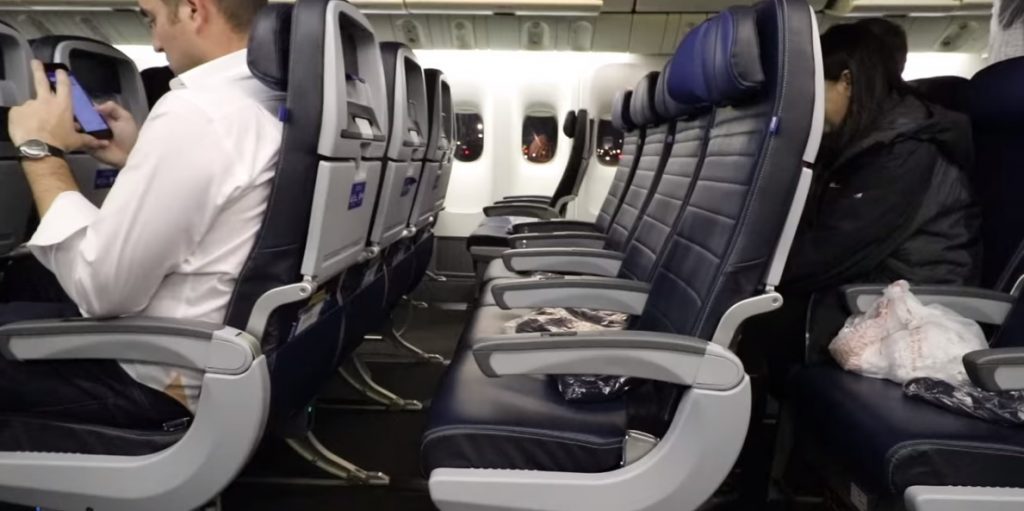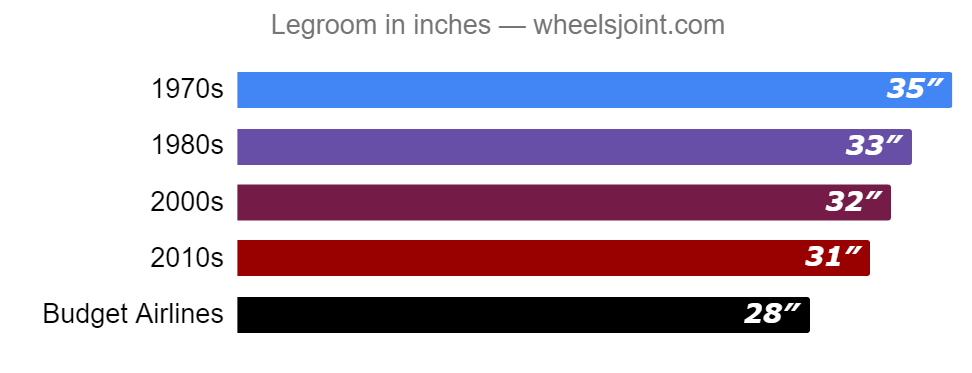Airplane cabins have become more cramped than ever. In last few decades, airlines have reduced legroom and furnished slimmer seats, all in the name of putting more travelers on board and cutting costs on fuel.

Early Days
Back in 1920s, when commercial travel was in its infancy, airplane seats resembled more like wicker chairs. Afterwards, they started making seats from aluminum, but looked different to what we are used to today. After the world war and economic boom, more travelers were looking to fly, so they started manufacturing bigger planes and comfortable plushy seats to go with it.
There was no economy or business class back in those days, just one class. But as the number of passengers surged and more people preferred flying over traveling on buses, cars or trains, airlines introduced two class system. First class and an economy class historically known as tourist class.
Legroom Evolution
Legroom, or the distance between the back of one seat or row to the front of next was about 35 inches before 1970s. So why did airlines suddenly start compressing legroom and shrinking seats? Profit.
U.S. deregulated its commercial aviation industry in 1978, soon after that airlines were competing to offer better fares. And what better way to do that than by putting more people on board. The smoke-filled cabins of 1960s and 70s were doubtlessly more capacious, but air travel was costly. During the regulated phase, the US government placed a floor on fares. In 1970s, a transcontinental flight would cost more than a thousand dollars while fares on relative routes can be about two hundred dollars today.
Airlines sold refundable tickets and there were no extra charges for check luggage or even seat choice. All changed after 1978 deregulation, as airlines started stuffing more passengers on board due to competition and lowering of fares.
The airline industry went through boom and bust cycles, suffered bankruptcies and were reduced to just a few companies controlling the market. In 1980s, the legroom was about 33 inches wide which came down to average of 32 inches in 2000s, and these days 31 inches is the new norm.

But there are some budget airlines that offer far less legroom, for example, at the bottom of the barrel, Spirit Airlines only offer 28 inch legroom. And similar to other economical airlines they have seats that don’t recline to save space and cram more passengers per flight.
There are more number of seats on airlines now than ever. Airlines are doing everything to cash in the record demand with overcrowded cabins. But there is increasing debate about this and even lawmakers are now considering setting minimum legroom requirement for planes. Last year the House passed a bill requiring minimum standards for legroom and seat dimensions.









